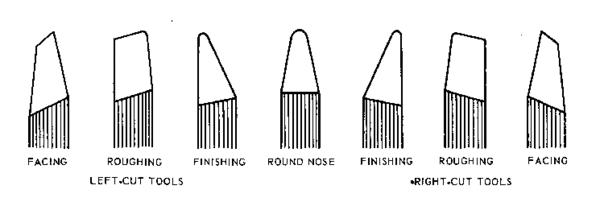Hey folks, I've been trying to grind my first flycutter bit for aluminium, with some success, but I can't seem to get it quite right.
As far as I understand, I should be trying to get as much rake as possible in every direction to get it as sharp as possible, and then slightly round the part that touches the metal so that the cuts are more shallow and not so jagged, is that right?
As far as I understand, I should be trying to get as much rake as possible in every direction to get it as sharp as possible, and then slightly round the part that touches the metal so that the cuts are more shallow and not so jagged, is that right?

